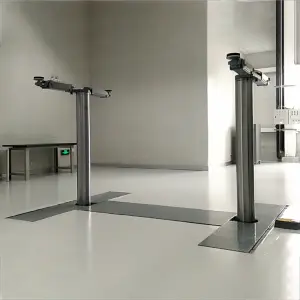The AC series, also known as air conditioning, has revolutionized the way we experience comfort in our homes, offices, and public spaces. Over the years, this incredible innovation has evolved to become an indispensable part of our lives, adapting to changing needs and advancements in technology. From its humble beginnings to the sophisticated systems we use today, let’s take a closer look at the evolution of the AC series.
The concept of cooling the air dates back thousands of years, with early civilizations developing methods to lower temperatures in their dwellings. However, it wasn’t until the late 19th century that air conditioning as we know it began to take shape. In 1902, Willis Carrier, widely regarded as the father of modern air conditioning, developed the first electrical air conditioner. This breakthrough invention was initially designed to control humidity in a printing plant, but its potential was quickly recognized for creating comfortable environments.
The early AC units were large, cumbersome machines that required extensive installation and maintenance. However, as the technology progressed, the AC series began to see improvements in size, efficiency, and accessibility. By the 1920s, air conditioning started to find its way into commercial spaces, such as movie theaters, department stores, and hotels. This shift paved the way for the widespread adoption of AC systems in various industries, transforming the way people experienced public spaces during hot summer months.
It wasn’t until the mid-20th century that air conditioning became common in residential buildings. As demand for cooling systems grew, manufacturers worked on developing smaller and more cost-effective units. By the 1970s, window-mounted air conditioners became popular, allowing homeowners to enjoy the luxury of cool air throughout their homes. This marked a significant milestone in the evolution of AC series, making it more accessible to the general public.

The Evolution of the AC Series: From Revolutionary Cooling Technology to Modern-day Comfort
Advancements in air conditioning technology continued throughout the 20th century, with the introduction of central air systems. These systems offered a more efficient and effective way of cooling larger spaces, such as office buildings and entire homes. Central AC allowed for precise temperature control, improved energy efficiency, and reduced noise levels. This breakthrough made the AC series an integral part of modern building design and construction.
In recent years, the AC series has witnessed another wave of innovation driven by increased focus on sustainability and energy efficiency. With the growing concern about environmental impact, manufacturers have been developing eco-friendly technologies to reduce energy consumption and minimize the use of harmful refrigerants. These advancements include the development of variable refrigerant flow (VRF) systems, which optimize energy usage based on demand, and the use of alternative refrigerants with lower global warming potential.

The Evolution of the AC Series: From Revolutionary Cooling Technology to Modern-day Comfort
Additionally, smart technology integration has revolutionized the way we interact with AC systems. Smart thermostats allow users to control and monitor their cooling settings remotely, leading to more efficient energy usage and cost savings. Moreover, artificial intelligence (AI) and machine learning algorithms are being employed to optimize the performance of AC systems, adapting cooling patterns based on occupancy and weather conditions.
Looking ahead, the future of the AC series appears bright. As climate change continues to impact global temperatures, the demand for effective cooling solutions will only increase. Manufacturers are investing in research and development to offer air conditioning systems that are not only efficient and sustainable but also capable of providing healthier and cleaner air. From improved filtration systems to air purification technologies, the AC series of the future is set to enhance both comfort and indoor air quality.

The Evolution of the AC Series: From Revolutionary Cooling Technology to Modern-day Comfort
In conclusion, the AC series has come a long way since its inception, transforming from a luxury reserved for a select few to a ubiquitous presence in our daily lives. Its evolution from large, cumbersome units to efficient and eco-friendly systems has made it an integral part of our modern architecture and lifestyle. As technology continues to advance, the AC series will undoubtedly play a crucial role in ensuring our comfort while considering the impact on the environment.quicklift car lift
